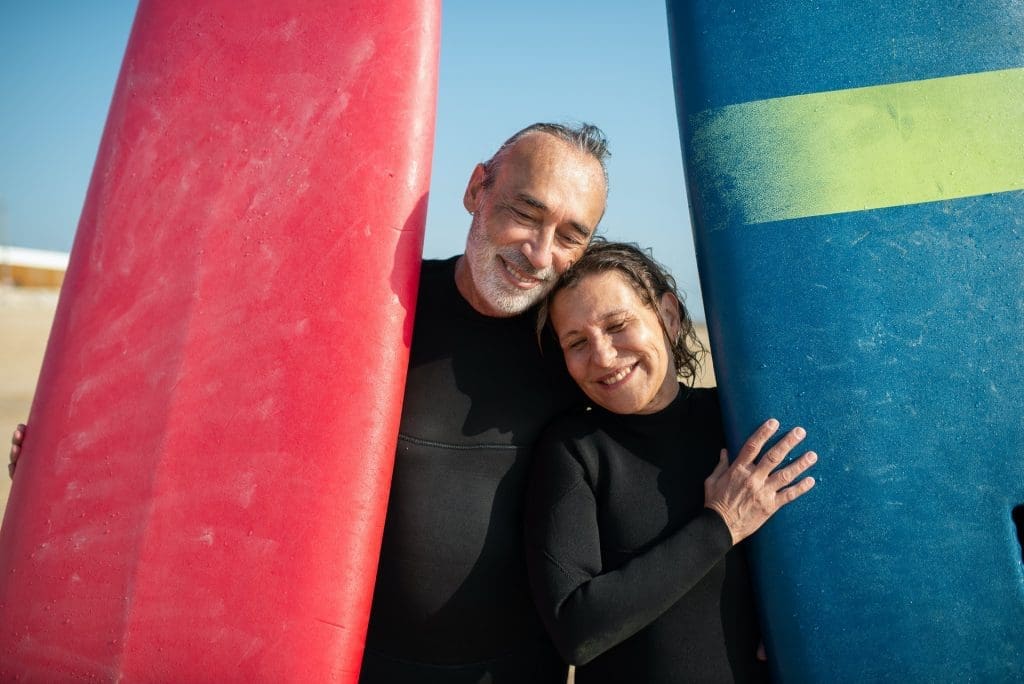The Perfect Guide To Buying A Women’s Wetsuit [Updated 2023]
Things for Women to Consider When Buying Their First Wetsuit in 2023
Picking up the perfect wetsuit is immensely important for avid watersports enthusiasts. Whether you’re a surfer, a kitesurfer, a paddle boarder or you take part in any of a number of other watersports – getting the right wetsuit is perhaps the most crucial early investment.
There are a large number of factors to consider when you’re looking to invest in a wetsuit, the thickness of fabric, the season you plan to use it in and many others. All of which we will come to discuss in this article. Notably, however, there are key things to look out for depending on gender – as the different body shapes of men and women present different challenges to getting the perfect wetsuit to fit your body.
So, in this article, we’re going to take a look at specifically what women should look for in their wetsuit and how different factors will affect their purchasing decisions.
The Differences Between Men’s & Women’s Wetsuits

There are some subtle aspects that need to be different in both men’s and women’s wetsuits. For women, certain areas of their body will be at greater risk in cold water and will need an extra level of protection from their wetsuit. This means that the cut of the fabric across areas such as the chest, hips and thighs will need to be thicker due to women being typically broader in these areas.
Male wetsuits too have areas with thicker fabric than that of women’s wetsuits in order to better protect them. For men, typically they will have broader and more pronounced shoulders – so in this area of the suit there will need to be the thicker level of fabric.
What to Consider When Purchasing Female Wetsuits
Which watersport will you be practising?
Firstly you need to look at what you’ll be using the wetsuit for. Given the range of different wetsuits with different thicknesses, it’s clear that depending on which sport you’ll be taking part in will influence heavily which wetsuit is going to be best for you.
For surfers, you’re going to need to keep warm first and foremost. That means you need a relatively thick wetsuit and one that is designed to trap body heat and retain this to avoid you taking the full force of the icy British seawater.
Let’s say that you’re competing in a triathlon? Well in this case you’re going to need a much lighter wetsuit to help you with swimming. These wetsuits will be designed to help make you as light as possible and keep your shape streamlined which will positively impact your swimming ability.

When and Where Will You be Using Your Wetsuit?
Now that you’ve carefully evaluated the type of wetsuit you’ll need for your ideal water sport, you now need to address the level of thickness and temperature protection that is going to be suitable depending on location and season.
Whilst the water temperatures of the Irish Sea, English Channel, Atlantic Ocean and North Sea are relatively similar – they can be different. So first, it’s best to look at the location you’re going to be practising your favourite watersport in. This is going to give you an idea of how cold the water is going to be and crucially what thickness is going to be best.
Now that you have this information, we then need to look at the season in which you’ll be taking to the British coastline. Obviously, during the summer months the water temperature is going to be higher and as such require a lower thickness of fabric from your wetsuit – in comparison, the winter is where a thicker and warmer wetsuit will be needed for you to have an adequate layer of protection.
Be Sure to Check the Fit as Carefully as Possible!
If a wetsuit does not fit your body shape correctly, then you can almost be certain that it won’t serve any practical use in protecting you. Getting the fit right is crucial. If you neglect this issue, then you can be sure that you’ll be getting some nasty shock of ice cold water hitting your skin whilst you are out in the sea.
A wetsuit needs to feel as though it is a second layer of your own skin. However, obviously it does not want to be too restrictive as your movement is going to be key in your performance at whichever watersport you’re taking part in.
Finding the balance can be difficult but one of the best things to do to ensure the fit when dry, is as tight as possible. This is because when the neoprene material hits the water it will loosen slightly as it takes on moisture. Therefore, as long as the fit is very tight when dry, you won’t lose the all important seal when it gets wet which, of course, is what will keep the cold water out.

The Type of Zip
Getting in and out of a wetsuit can be quite tricky, we already mentioned that they need to be a second skin – and that means it isn’t going to be easy to simply slip in and slip out with ease. Different zip types are available on different female wetsuits and there are many reasons that any of these would be best suited to you.
Back Zips are the traditional style and are probably the easiest type of wetsuit to put on and take off. However, the main drawback is that unless you have what would need to be the world’s longest arms – you are certainly going to need a helpful friend that can close the zip once you’re in.
Chest zips are incredibly popular nowadays, and they do allow for solo dressing as well as offering a bit more flexibility around your shoulders as well which is great. However, they can be pretty tricky to get in and out of, so you may well need to practice at home before you have a potentially embarrassing time in front of beach onlookers.

Style and Appearance
Whilst the functionality of your female wetsuit is obviously the most important factor. Let’s not forget that these are items of clothing, and you want to make sure you are comfortable wearing your wetsuit.
Essentially, once you have evaluated all of the different factors we’ve listed above you should browse around and make sure you find a stunning addition to your water wear wardrobe collection. Be it based on style, seam type or colours and patterns – make sure you get a wetsuit that not only protects you, but that feels and looks great too!
In Summary
We really hope that you have found our guide on buying the perfect female wetsuit helpful. There certainly is an incredible amount of things for you to think about before you make a solid investment for your watersports hobby.
If you’d like to view through a collection of some of the best wetsuits available – you can browse through the female section of The Watersports Centre range here.






